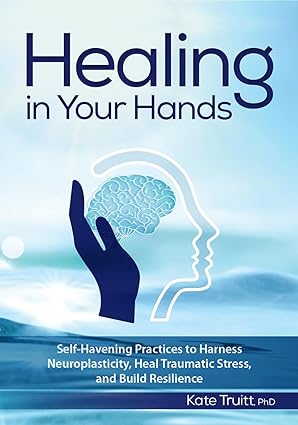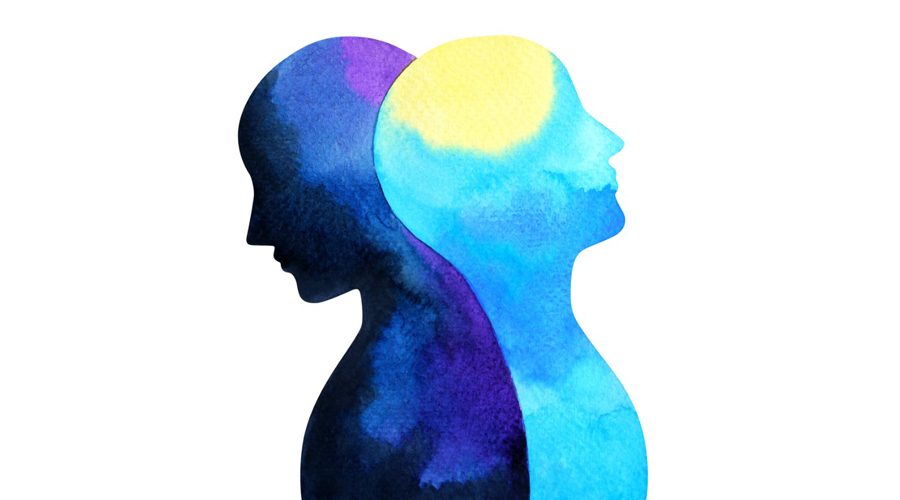How to Beat Burnout Without Stepping Away from the Work You Love
By Dr. Kate Truitt
Burnout is everywhere in our field. We are a profession built on caring. We hold space for grief, for rage, for trauma, for hopelessness. Every day, we meet people in the darkest moments of their lives—and we do it with compassion, presence, and skill. But the truth is, when we are continually exposed to high emotional labor without adequate replenishment, our nervous systems eventually wave a white flag. That white flag is what we call burnout.
There’s a dangerous myth that still floats around in our communities: that burnout happens because someone lacks boundaries, or isn’t practicing “enough” self-care. But this narrative is not only wrong—it’s harmful.
Burnout is not a failure of willpower. It’s not something we can yoga or gratitude-journal our way out of. Burnout is a neurobiological response to chronic, unrelenting stress. It’s what happens when Amy, the amygdala, has been on high alert for too long, without enough time to return to baseline. When cortisol surges become our daily baseline. When the “window of tolerance” becomes a pinhole.
The Neuroscience of Burnout and Compassion Fatigue
We often think of burnout as the end stage of exhaustion—a kind of professional collapse. But what if we started thinking of it instead as a chronic nervous system adaptation to overwhelming, sustained demand?
Your brain, your body, your beautiful, adaptive system, is not betraying you when you burn out. It’s doing what it was designed to do: protect you from a threat. The problem is, it doesn’t always know how to differentiate between an actual crisis and a slow, smoldering depletion that builds over time.
Let’s briefly break down what’s really happening underneath the surface:
- Burnout is what happens when your emotional, physical, and mental energy tanks are consistently drained with no opportunity for replenishment. It’s not a singular event but an accumulation. The slow leak of vitality that eventually leads to apathy, detachment, and even despair.
- Compassion Fatigue, often called the “cost of caring,” occurs when we take in too much of our clients’ pain without releasing it. This isn’t just about empathy. It’s about emotional resonance. Our mirror neurons and insula light up when we witness others’ suffering, and over time, that resonance can tip from connection to overload.
- Trauma Reactivation is what happens when our clients’ stories or our work environments trigger unresolved material in our own systems. These aren’t just moments of emotional overwhelm; they are neurobiological events. The past leaks into the present, and Amy goes into overdrive.
And here’s the kicker: most of us are experiencing one of these three things. Sometimes without even realizing it.
Amy on Overdrive: The Science Behind the Symptoms
Let’s talk about Amy, the amygdala, for a moment. She’s your brain’s alarm system and your most dedicated protector. Her job is to keep you safe, scanning constantly for danger. When Amy senses a threat, she doesn’t ask questions or check your calendar, she just reacts as fast as 75 milliseconds.
In the context of burnout and compassion fatigue, Amy isn’t responding to a single trauma, but to the cumulative weight of hundreds of small stressors. Late nights. Emotional sessions. Ethical dilemmas. Paperwork marathons. That client who relapsed. The phone call you dread returning. The impossibly long waitlist.
Each of these micro-stressors tells Amy, “We’re not safe.” And over time, without intentional regulation, Amy begins to generalize. She starts responding to everything like it’s a threat. That’s when we start to feel:
- Chronically exhausted, even after rest.
- Emotionally blunted or reactive.
- Disconnected from our purpose.
- Haunted by the sense that we’re not doing “enough.”
This is not a failure. This is physiology. This is a brilliant system doing exactly what it was built to do but doing it for too long, without support.
What Burnout Looks and Feels Like in the Real World
If you’re reading this and wondering, “Is this me?”, you’re not alone. One of the hardest things about burnout is how sneaky it can be. It doesn’t usually announce itself in big dramatic ways. It creeps in quietly. It hides in our productivity, our caretaking, our “just get through it” mentalities.
Sometimes, burnout looks like numbness. Other times, it looks like irritability or emotional flooding. And often, it’s accompanied by a deep sense of guilt because we tell ourselves, “I should be stronger than this. I know better.”
But burnout doesn’t care how many degrees we have or how skilled we are with clients. It’s not a matter of education but it’s a matter of capacity. And eventually, when we don’t tend to the signals, the nervous system sends louder ones. In this psychoeducational video, I delve into how you can notice the early signs of burnout.
Here’s what burnout often feels like in our line of work:
Behavioral Signs
- You’re canceling more social plans, not out of self-care, but because you feel depleted before the day even starts.
- You find yourself zoning out mid-session, wondering how much longer you can keep doing this work.
- You’re procrastinating tasks you used to enjoy, like writing case notes or prepping a new workshop.
- You fantasize about quitting not because you don’t love your clients, but because you don’t recognize yourself anymore.
Emotional Signs
- A creeping sense of dread shows up before your first client of the day.
- You feel detached from the very compassion that once fueled your purpose.
- You’re snapping at your partner, your kids, or yourself for things that wouldn’t normally bother you.
- You feel like you’re “failing” even though you’re doing everything you can.
Sometimes we think we’re just anxious or feeling low, but it’s actually burnout showing up after long periods of stress. I encourage you to watch this video where I talk about the difference between burnout and other emotional responses.
Somatic Signs
- You wake up tired, no matter how long you sleep.
- Headaches, stomach issues, muscle tension—your body is sounding the alarm.
- Your breath feels shallow. Your chest feels heavy.
- Sleep becomes elusive, or you wake up feeling like you never slept at all.
And then there’s the big one: you stop feeling joy.
When we lose access to joy, it’s not just burnout. It’s a system in shutdown. A brain and body that have retreated into conservation mode, believing there’s no space left for thriving.
But let me tell you something vital: joy can come back. Energy can be restored. Burnout is not the end of your story. It’s a message and a call from your nervous system asking for connection, care, and recalibration.
The Three Pillars of Resilience in Trauma-Informed Care
When we talk about healing burnout, it’s not enough to just stop the hemorrhaging. We need to rebuild the foundation. That foundation, in my practice and my life, is grounded in what I call the Three Pillars of Resilience.
These pillars aren’t just theoretical frameworks. They are the practical, everyday lens through which I view every session, training, team meeting, and moment of self-care. They are the scaffolding that supports not just our clients, but us, too.
- Trauma-Informed Care: Compassion for Our Own Histories
- We know that trauma-informed work starts with understanding how life experiences shape the nervous system. But how often do we extend that same lens to ourselves? Being trauma-informed isn’t just about creating safe spaces for others. It’s also about acknowledging that we, as helpers, carry our own stories. And those stories don’t disappear just because we have training, credentials, or a calm therapist voice. Trauma-informed resilience means recognizing the way vicarious trauma, systemic stress, and personal history intersect and learning to gently hold those truths without shame. This pillar invites us to stay curious, not critical, about our own responses to chronic stress. So when burnout shows up, ask: Is this mine or is this an echo of the pain I’ve carried or witnessed for too long without relief?
-
Neuroscience-Based: Partner With the Your Brain. Don’t Not Against It
- This pillar changed everything for me. Understanding the neurobiology of stress, emotion, and healing turned what felt like personal failure into a physiological fact. When we acknowledge that our brain isn’t broken, but is simply reacting as it was designed to, we can shift from self-judgment to self-support. Your brain’s survival mechanisms—Amy’s alerts, cortisol spikes, sympathetic overactivation—aren’t the enemy. They’re the call. Our job is to answer that call with tools that speak the language of the nervous system. That’s why journaling, breathwork, mindful movement, and somatic anchoring are so essential. These are not “extras” or indulgences. They’re re-regulation rituals that literally reshape the pathways of stress in the brain. A neuroscience-based approach to resilience says, “Let’s stop trying to push through.” Instead, let’s pause, listen, and partner with our physiology.
-
Resilience-Focused: Designing a Life That Refuels You
- Resilience isn’t a destination but a set of daily practices that help us stay connected to purpose, meaning, and vitality. And here’s something that gets missed far too often in professional spaces: Resilience is not stoicism. It’s not about enduring without breaking. It’s about recovery, returning to center, again and again, with greater ease and awareness. A resilience-focused lens invites us to:
- Measure success not just by productivity, but by sustainability.
- Build micro-moments of safety and joy into our daily rhythms.
- Normalize taking breaks. Resting. Saying no.
- Celebrate small wins and incremental shifts.
For many of us, the burnout cycle began when we were taught to hustle for worth. Resilience flips that script. It reminds us that worthiness is already baked into our humanity. That our wellness is not a reward for hard work but a requirement for meaningful, ethical care.
At its core, emotional regulation involves three key skills.
- Awareness. This means recognizing what is happening inside including physical sensations, emotional states, and thought patterns. For many survivors, this step alone can be overwhelming.
- Tolerance. The capacity to stay with those emotions without immediately reacting, shutting down, or numbing out.
- Modulation. The ability to shift or soften the emotional experience in a way that feels safe and empowering.
These are not skills we are born with. They are learned, and often, in the case of trauma, they need to be relearned. Emotional regulation begins with creating consistent moments of safety. Sometimes that is as simple as learning to pause and take a breath. Sometimes it means building rituals into the day that give the nervous system cues of predictability and control.
As clinicians, we can model these skills in the therapeutic relationship. When we show up regulated and grounded, we become a safe nervous system for our clients to mirror. Over time, this co-regulation helps lay the foundation for self-regulation, giving survivors a felt sense of what it means to stay with themselves, even in discomfort. Begin your resilience Burnout Recovery Journey with me on my Burnout Recovery YouTube Playlist or take one step today to start partnering with your nervous system by practicing the exercise in the below video.
Feeling like you’re slipping out of your Resilient Zone?
Whether it’s before a session, after an emotional meeting, or during a stressful moment—pause and reset with this free burnout recovery tool. I created it to guide you through the calming power of the sigh breath and mindful touch exercise. Download it here and reclaim your calm.

Everything we’ve talked about here—burnout, trauma-informed resilience, nervous system overload—it all points back to one truth: your brain and body are trying to keep you safe. If this conversation about burnout and resilience resonated with you, I invite you to explore my book, Healing in Your Hands.

References
-
Raypole, C. (2023, May 9). Burnout Recovery: 11 Strategies to Help You Reset. Healthline. https://www.healthline.com/health/mental-health/burnout-recovery
- Delp, M. (2024, June). From Exhaustion to Empowerment: A Therapist’s Guide to Supporting Clients Through Burnout. Family Therapy Magazine. https://ftm.aamft.org/from-exhaustion-to-empowerment-a-therapists-guide-to-supporting-clients-through-burnout/
- Sutton, J. (2023, April 4). Understanding Therapist Burnout: 12 Symptoms & Recovery Tips. Positive Psychology. https://positivepsychology.com/therapist-burnout/
- Ho. T. (2023, July 4). How To Recover from Burnout Without Quitting Your Job. Notes by Thalia. https://notesbythalia.com/how-to-beat-burnout-without-quitting-your-job/




















